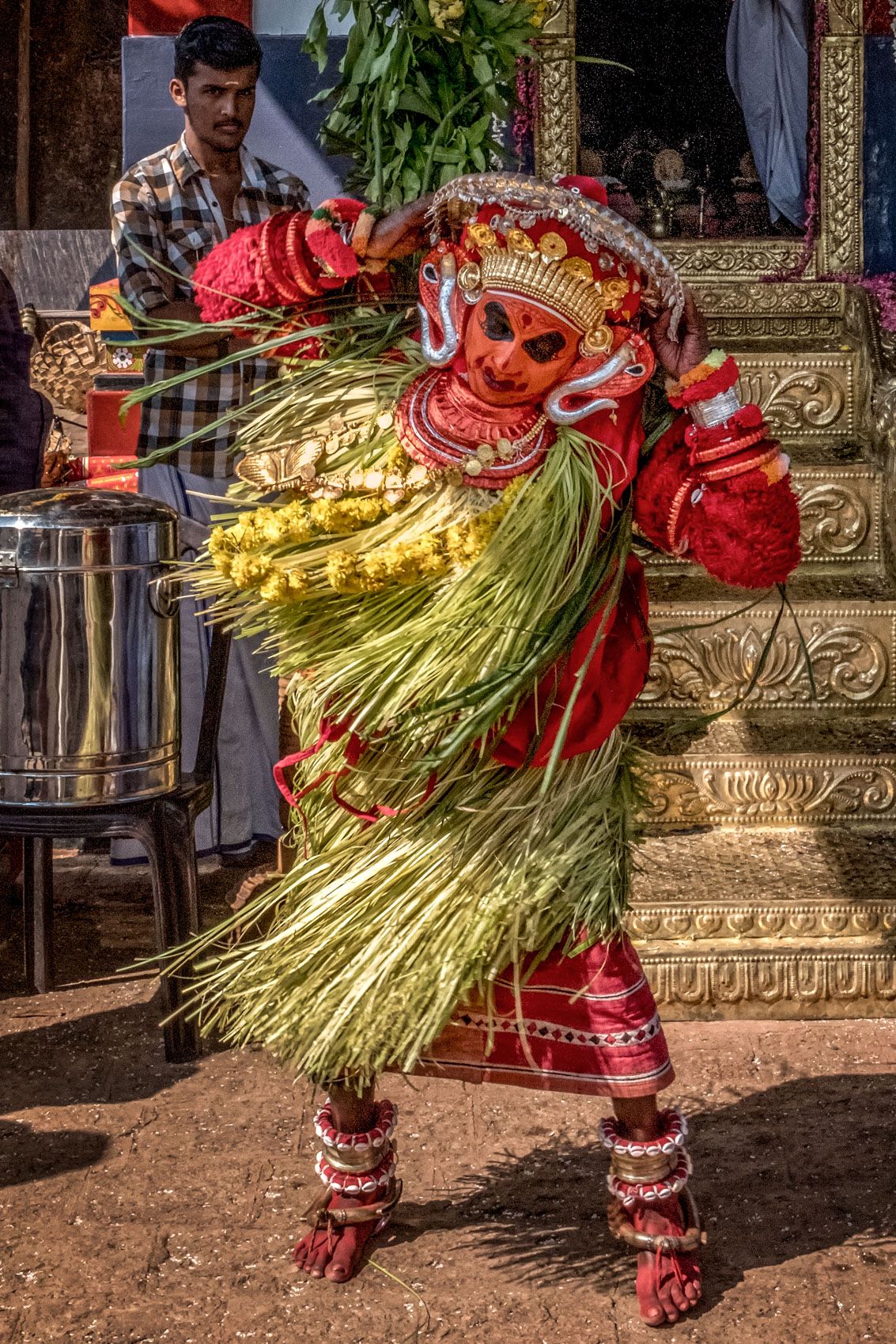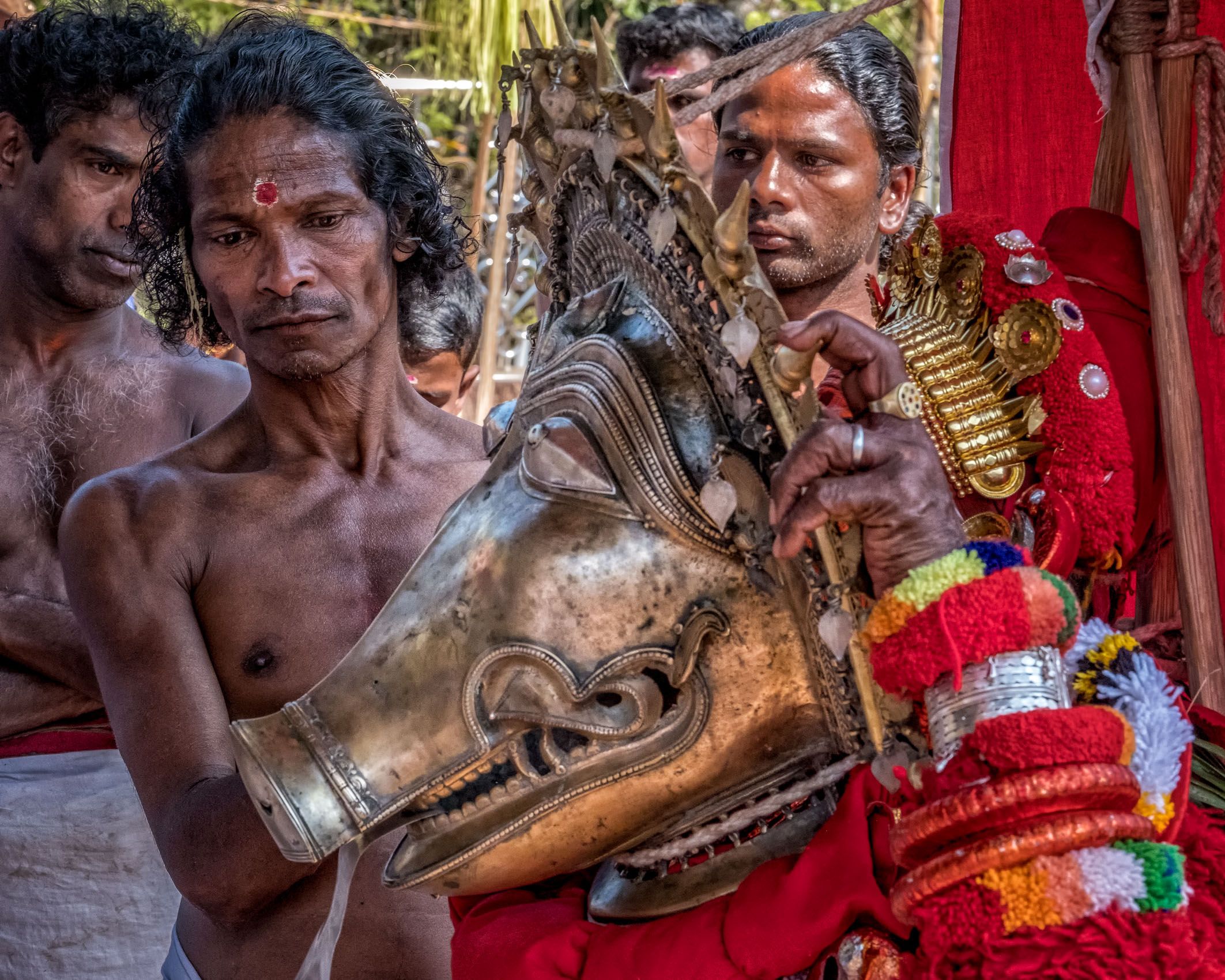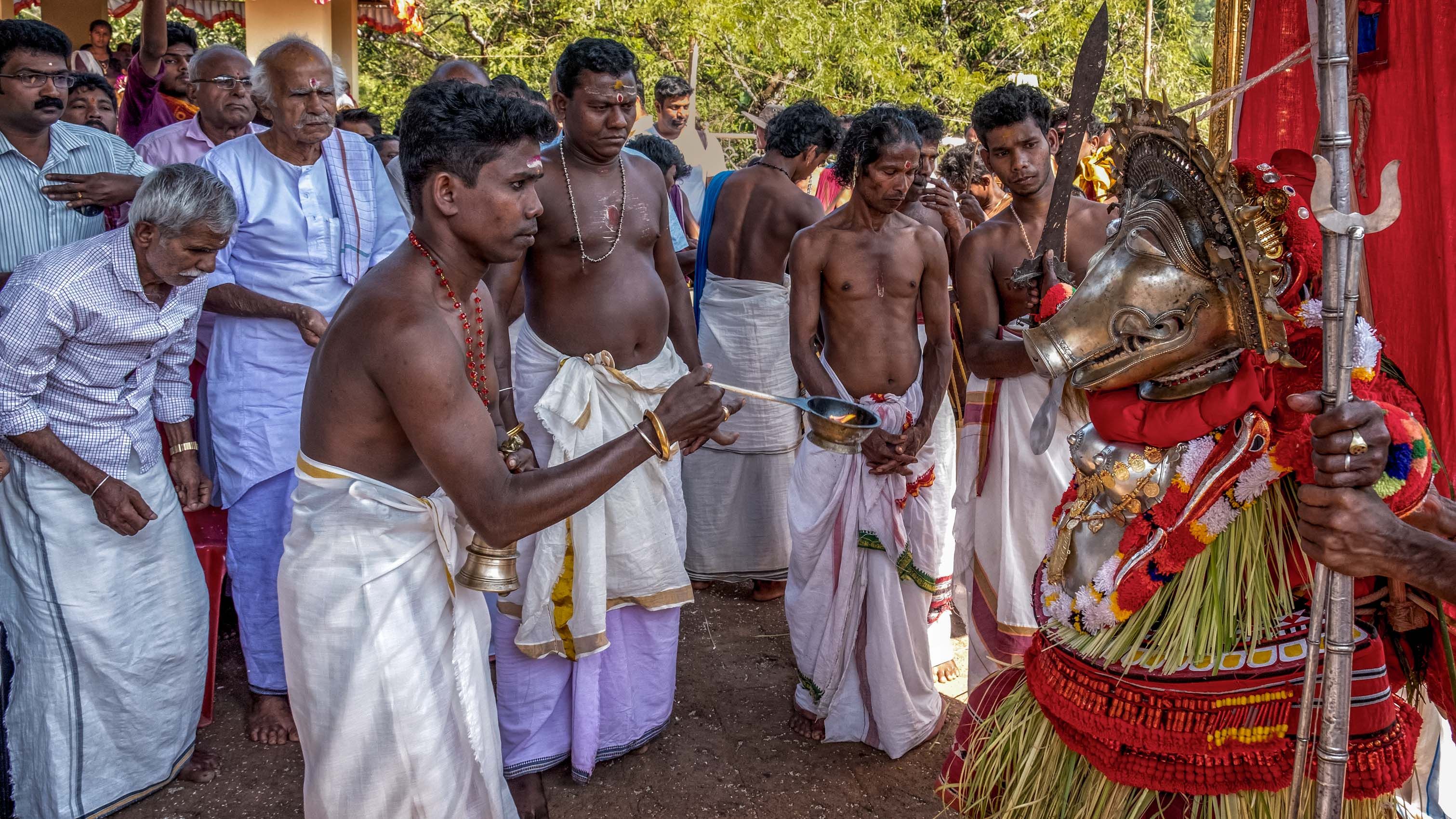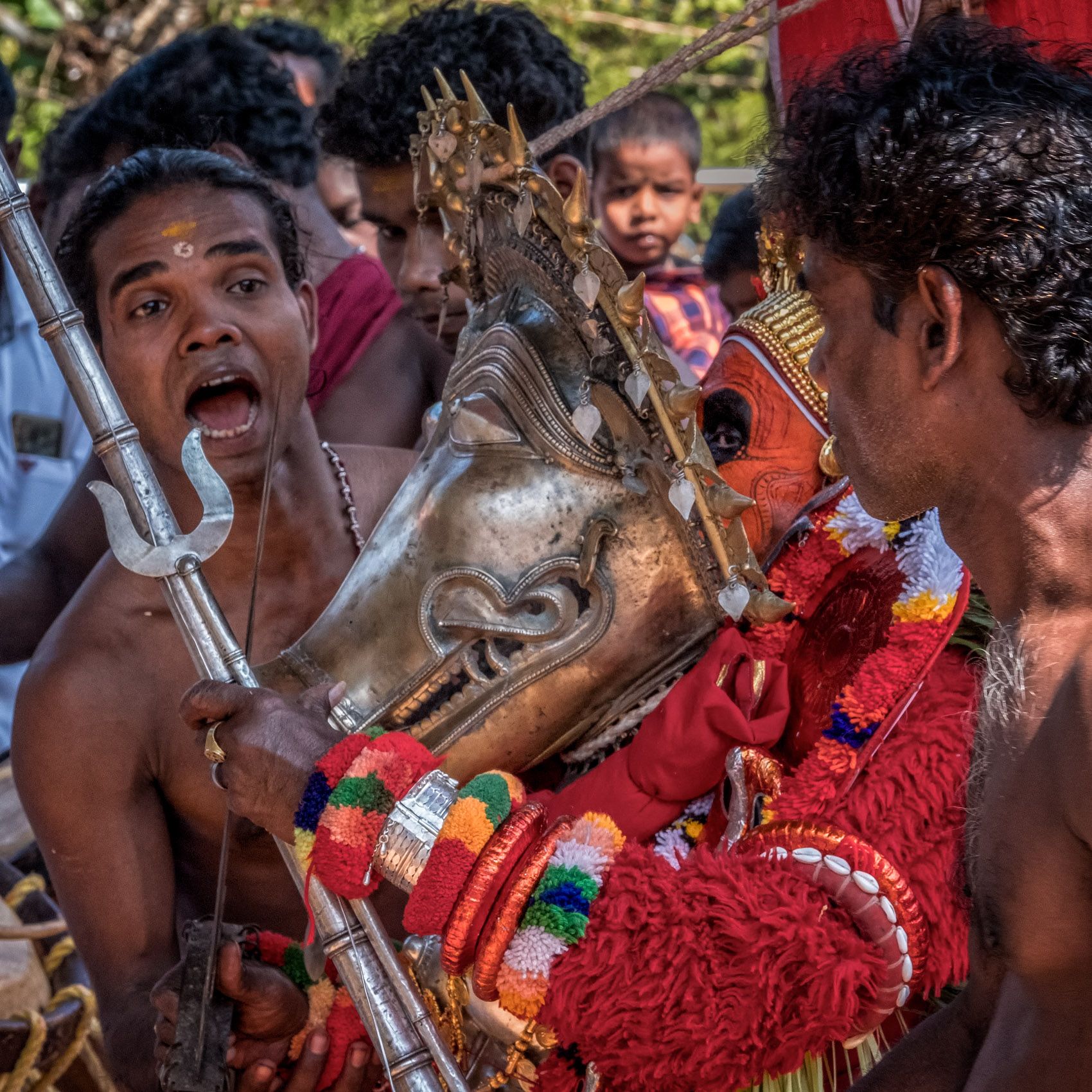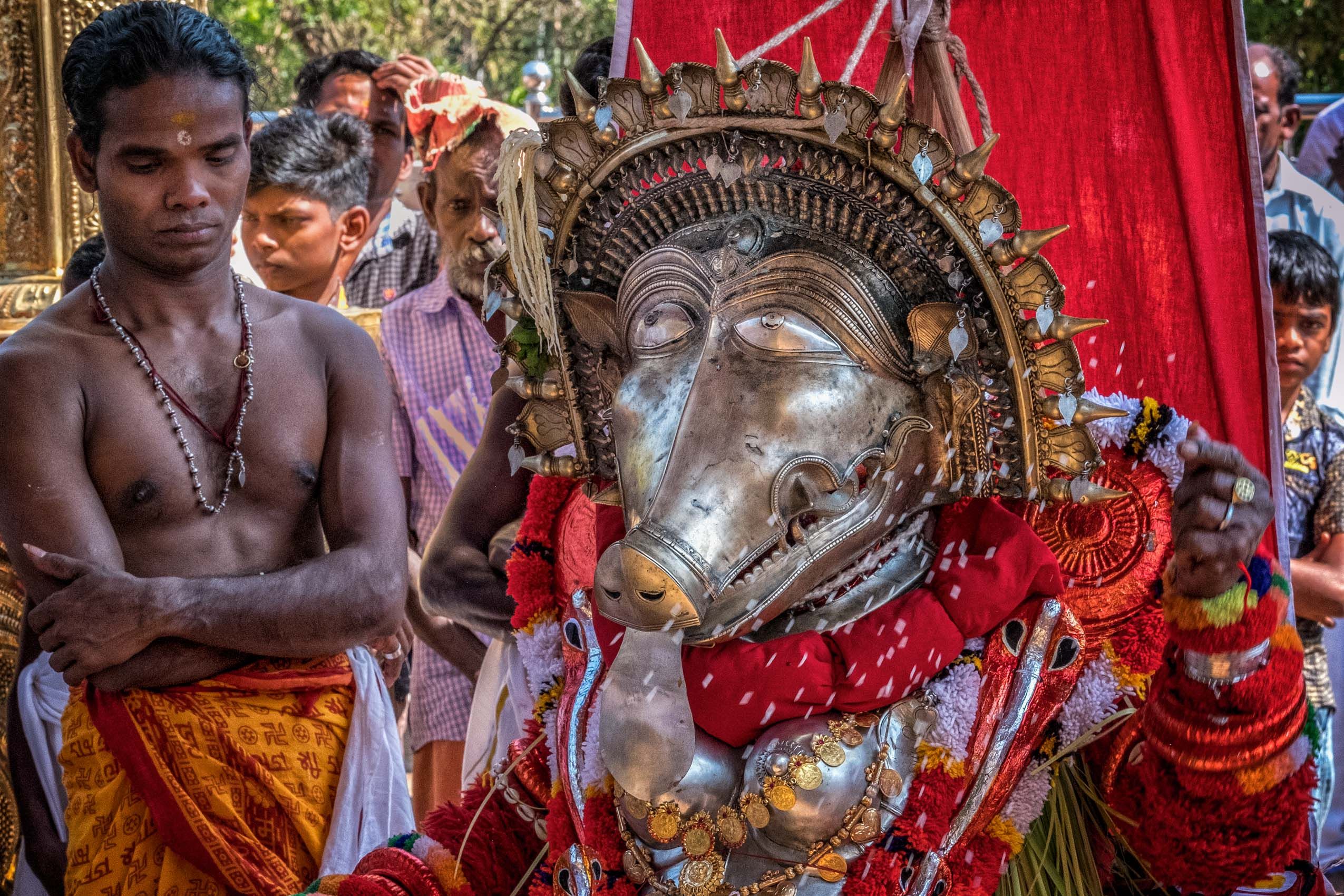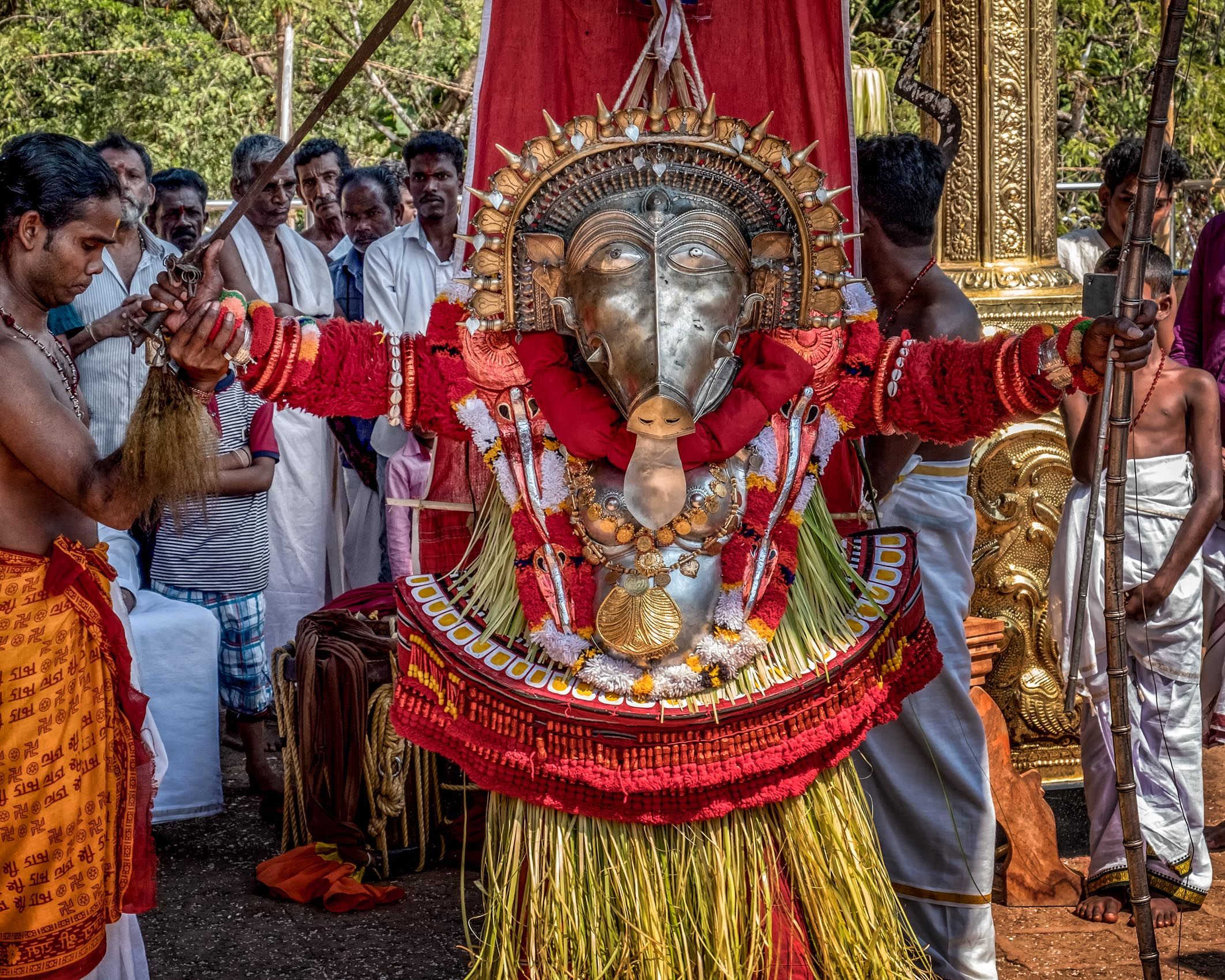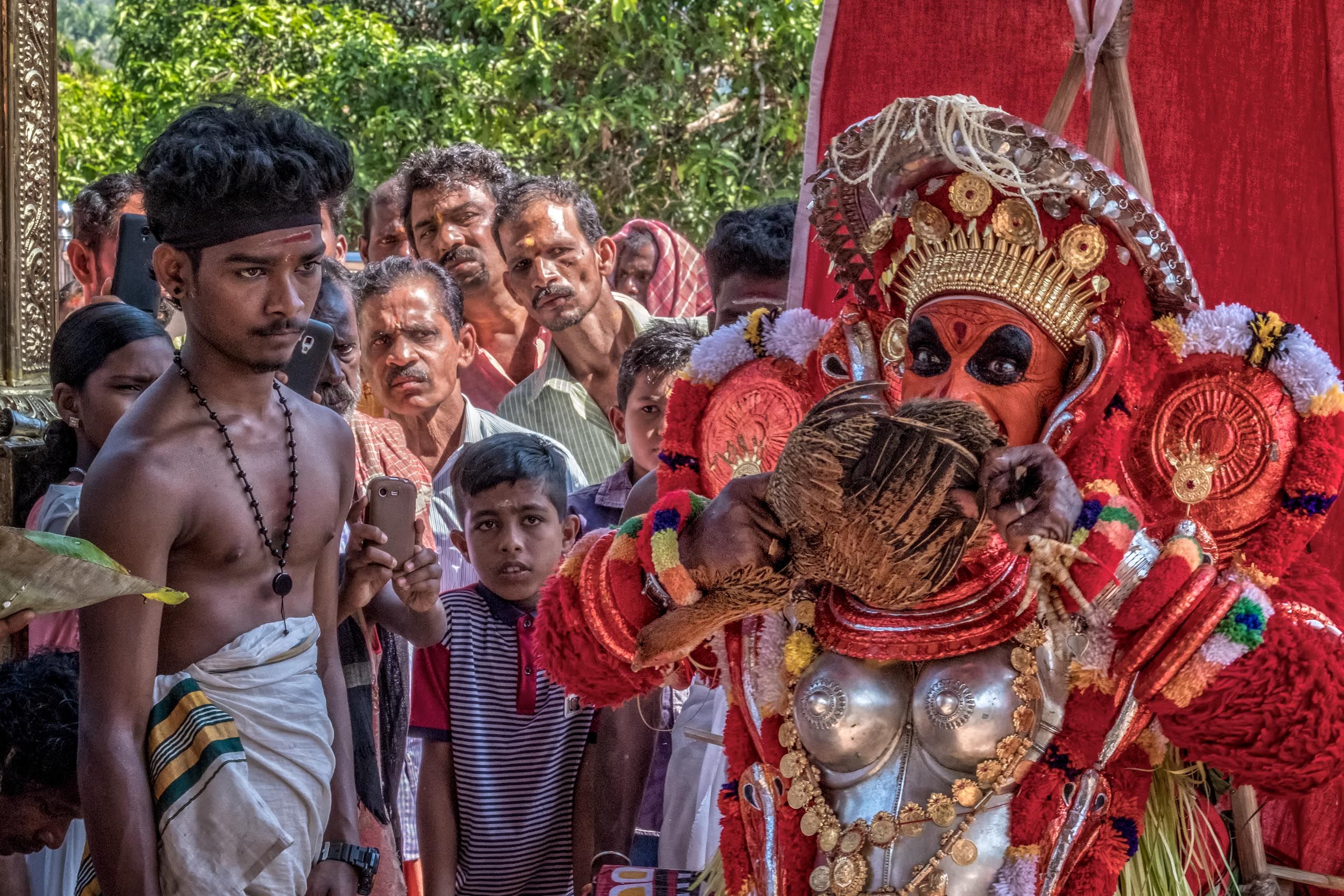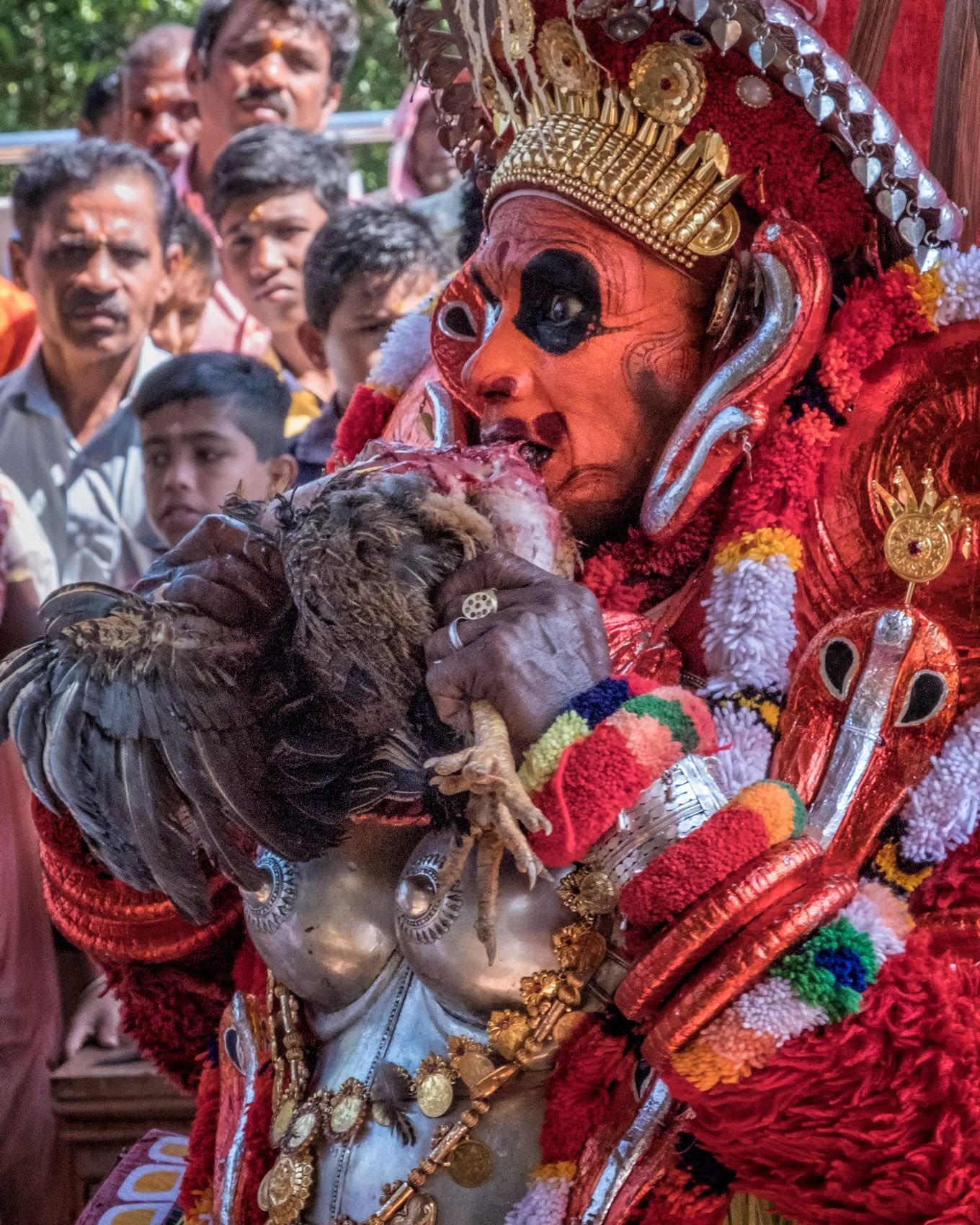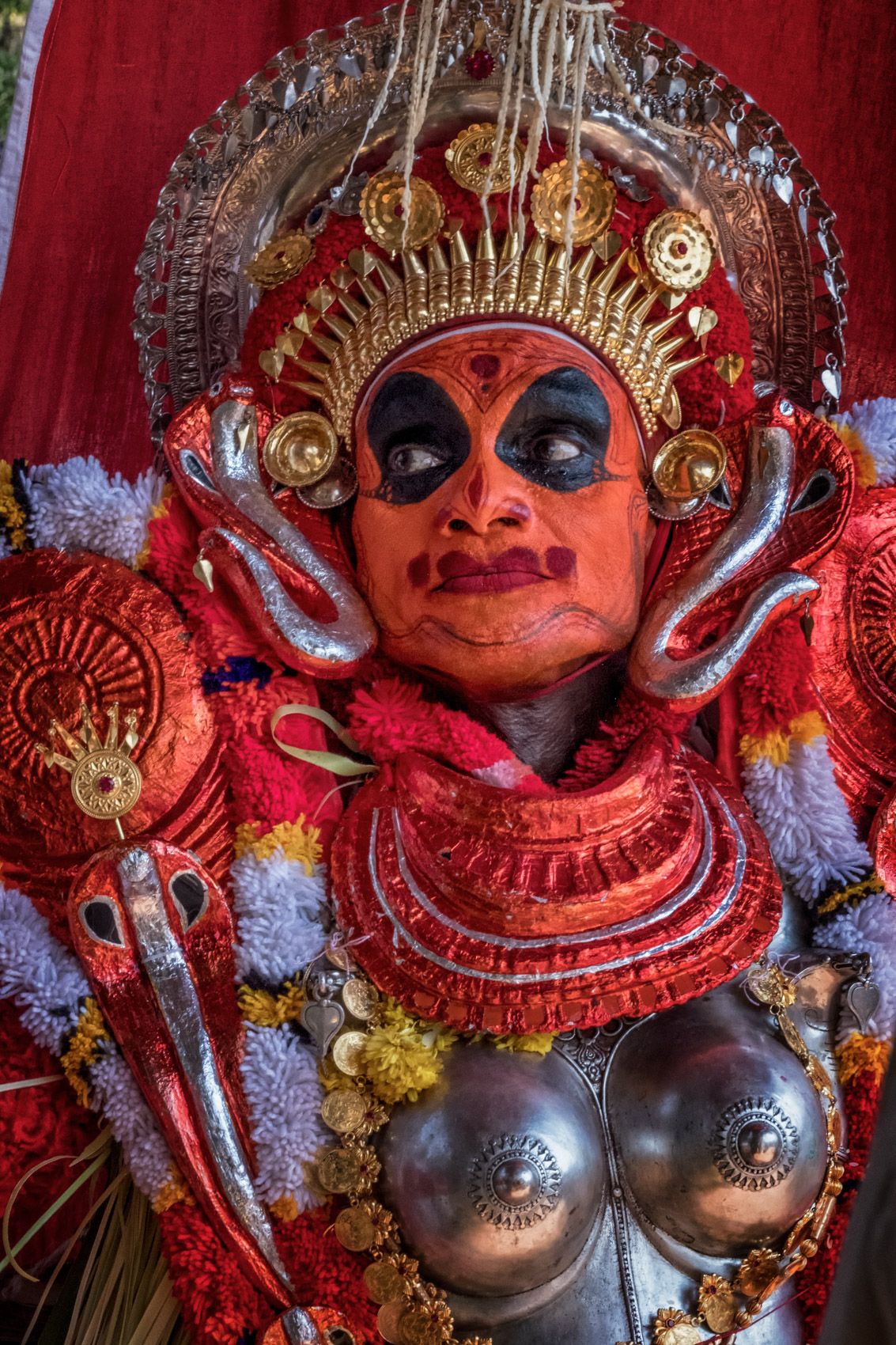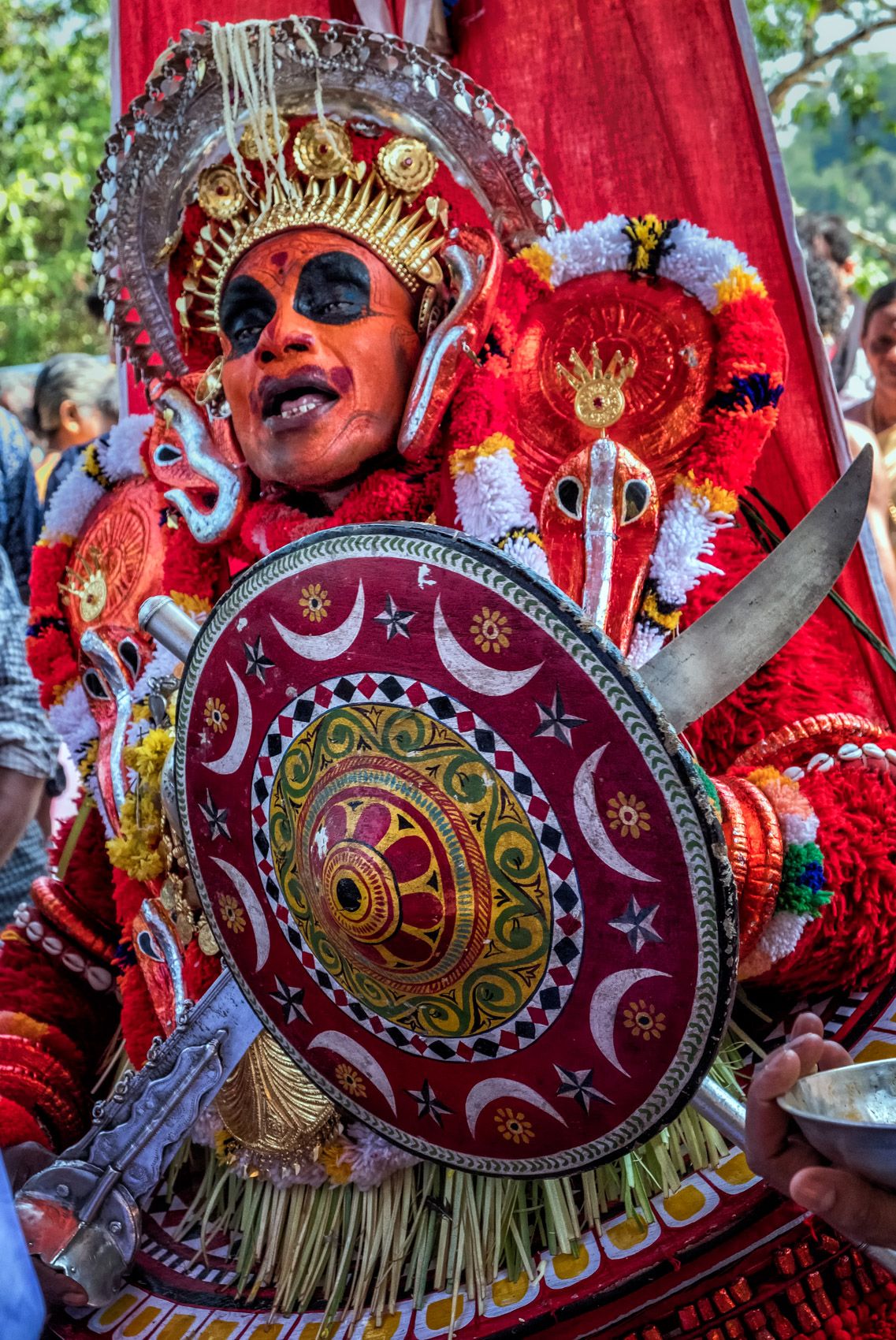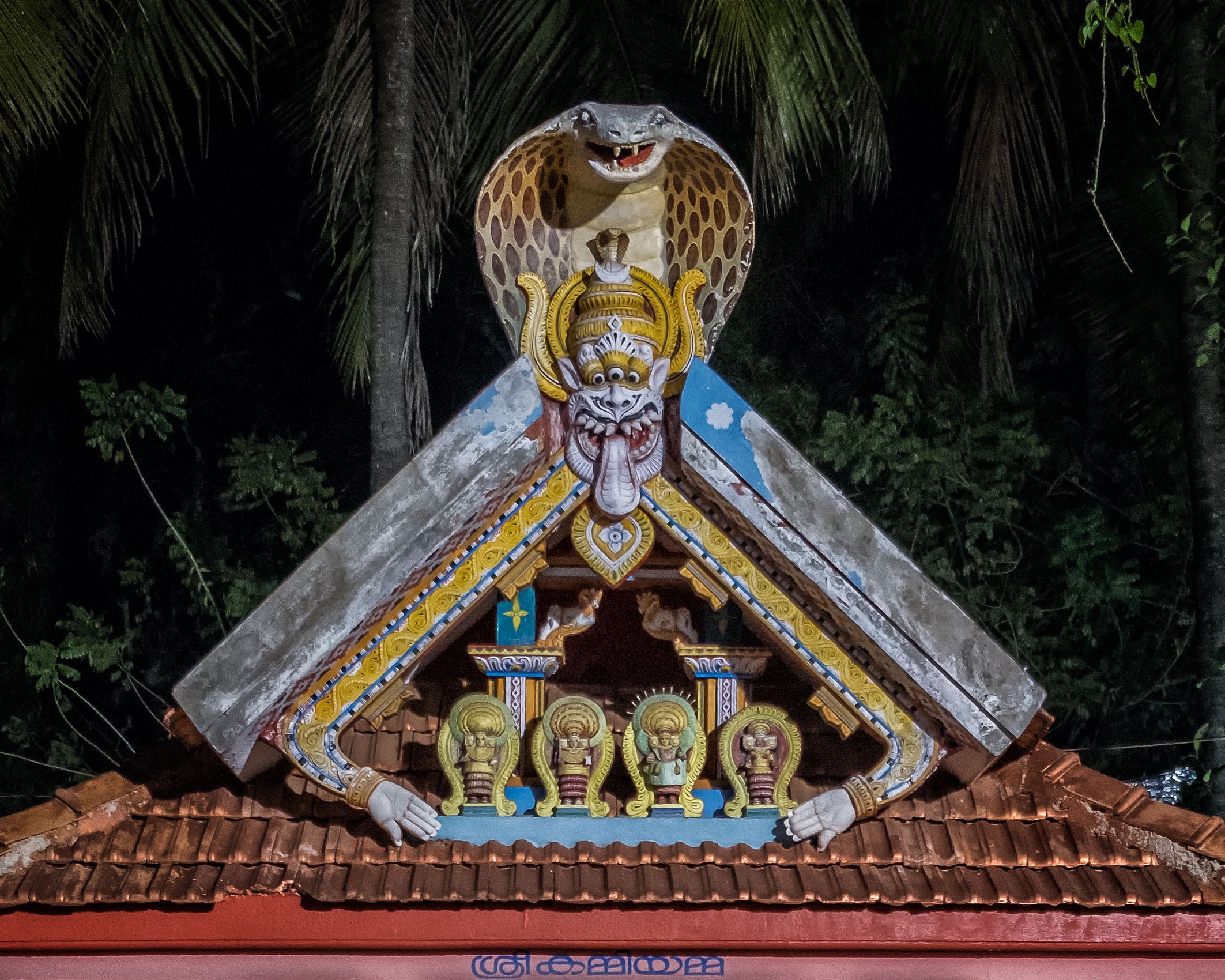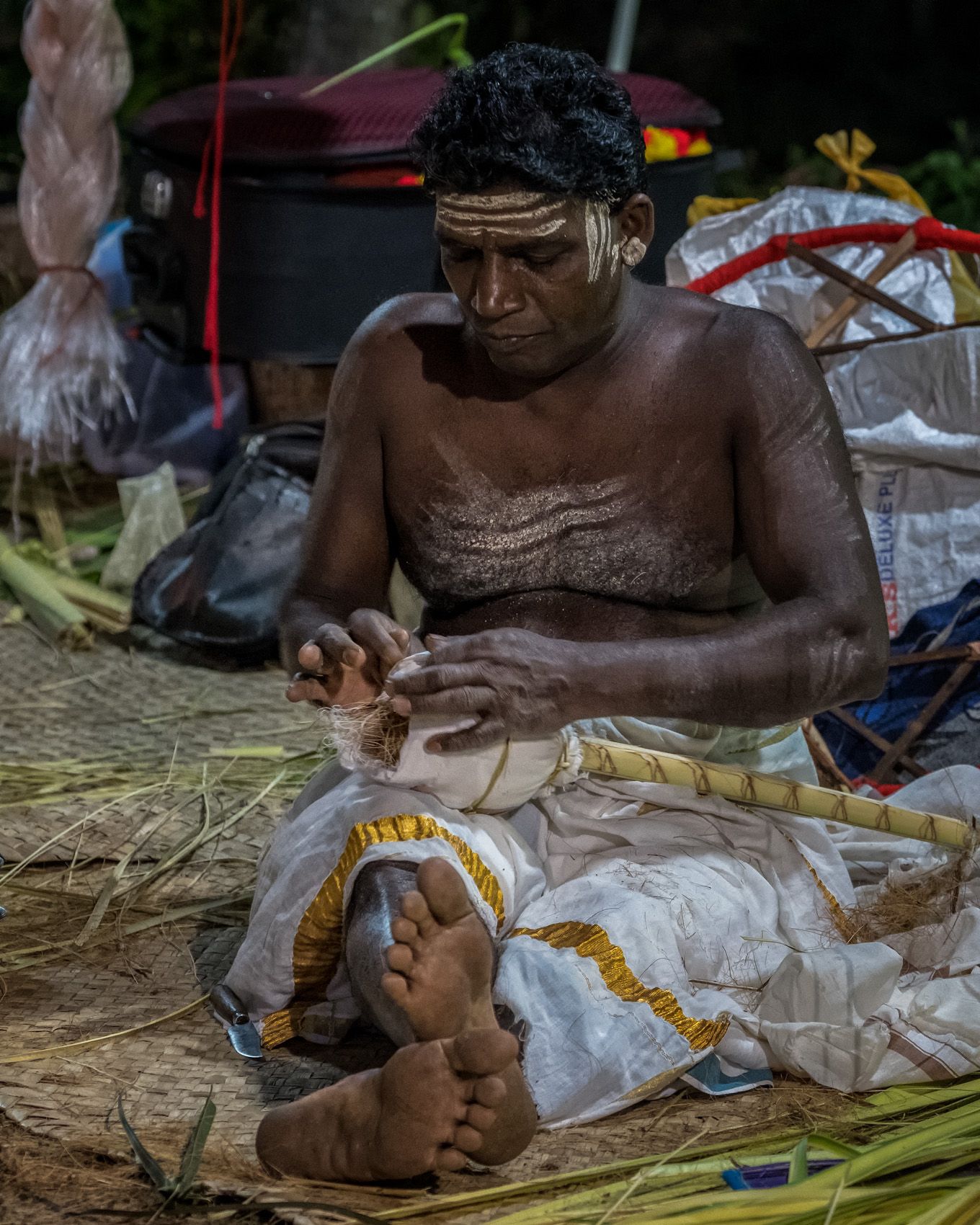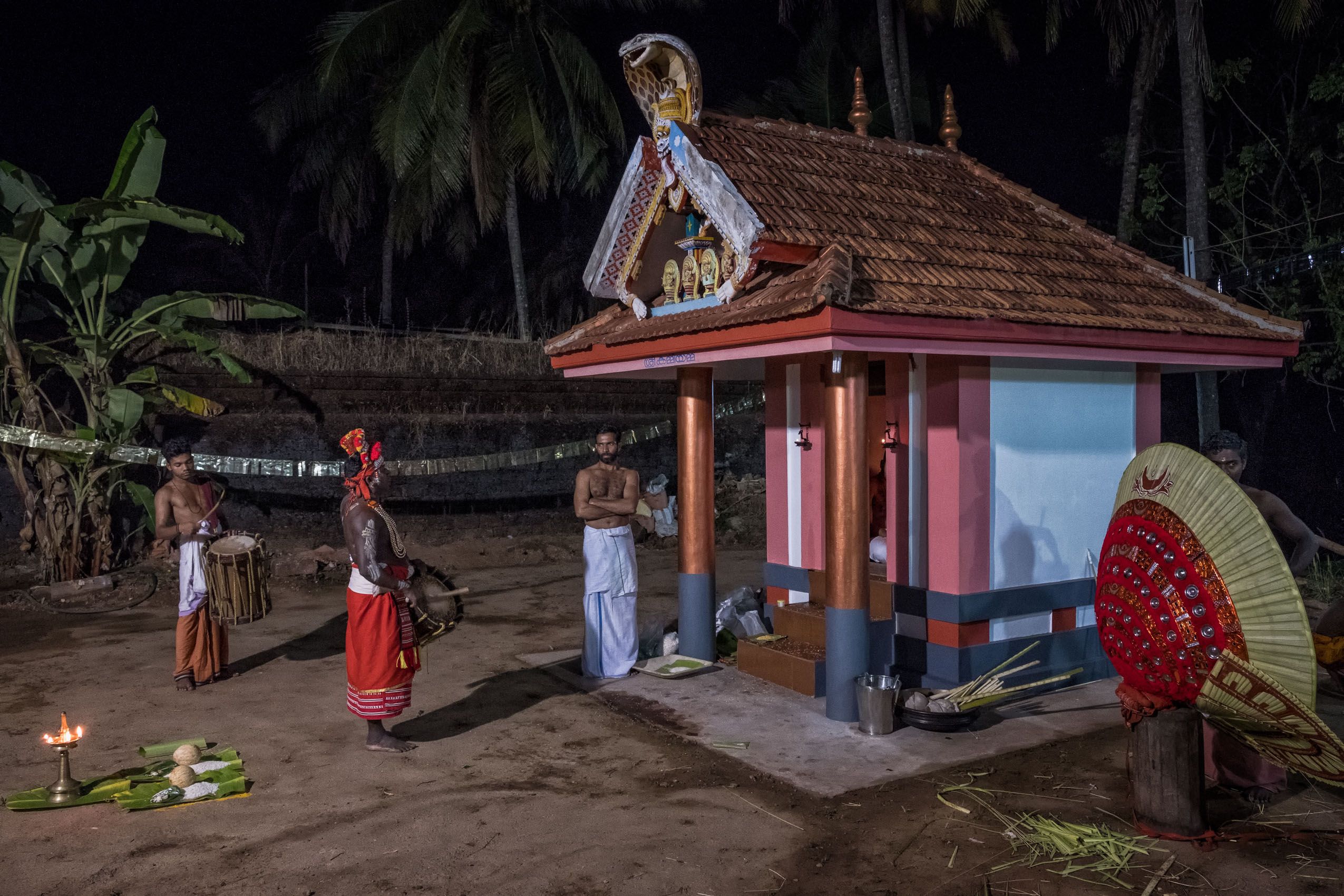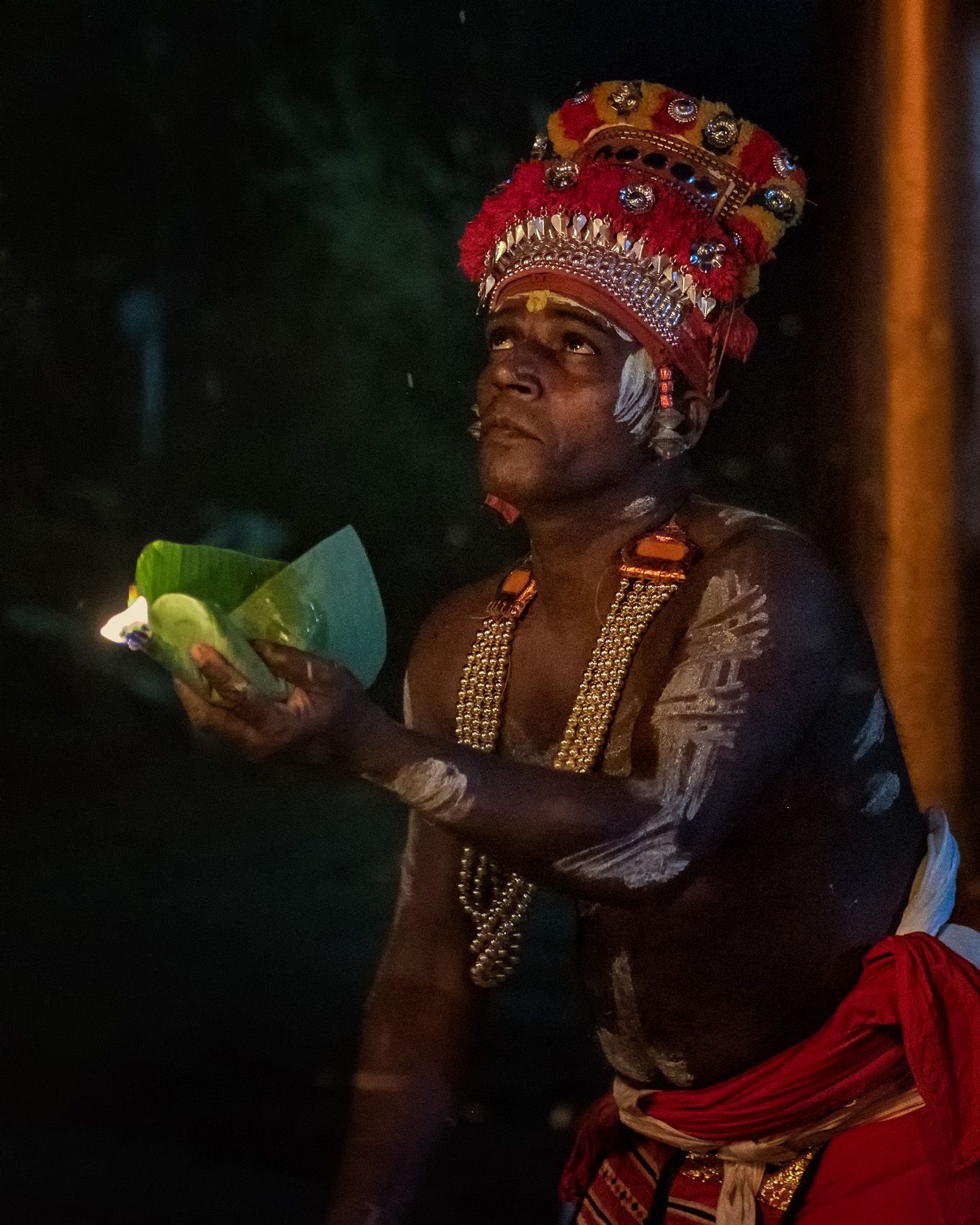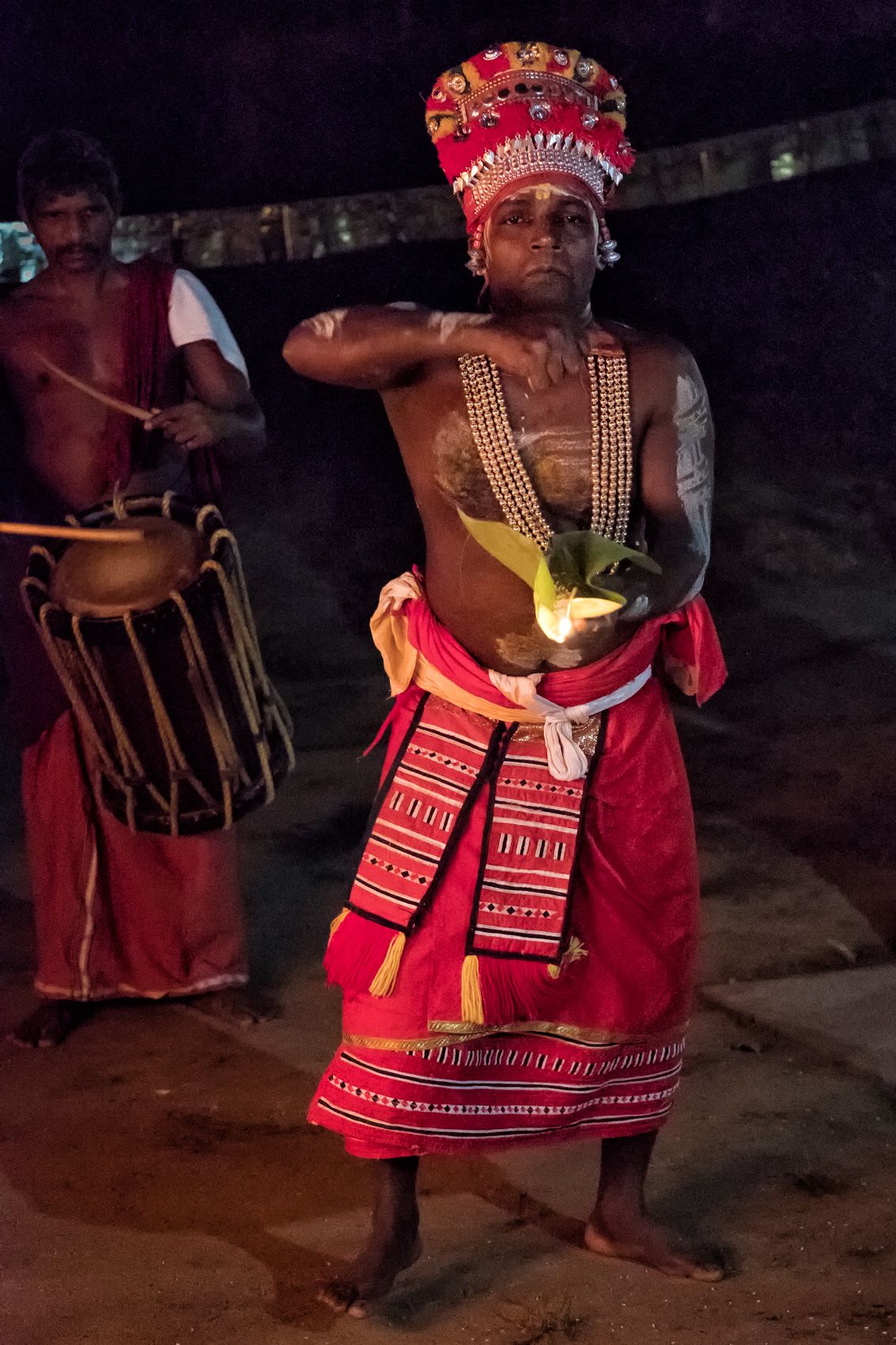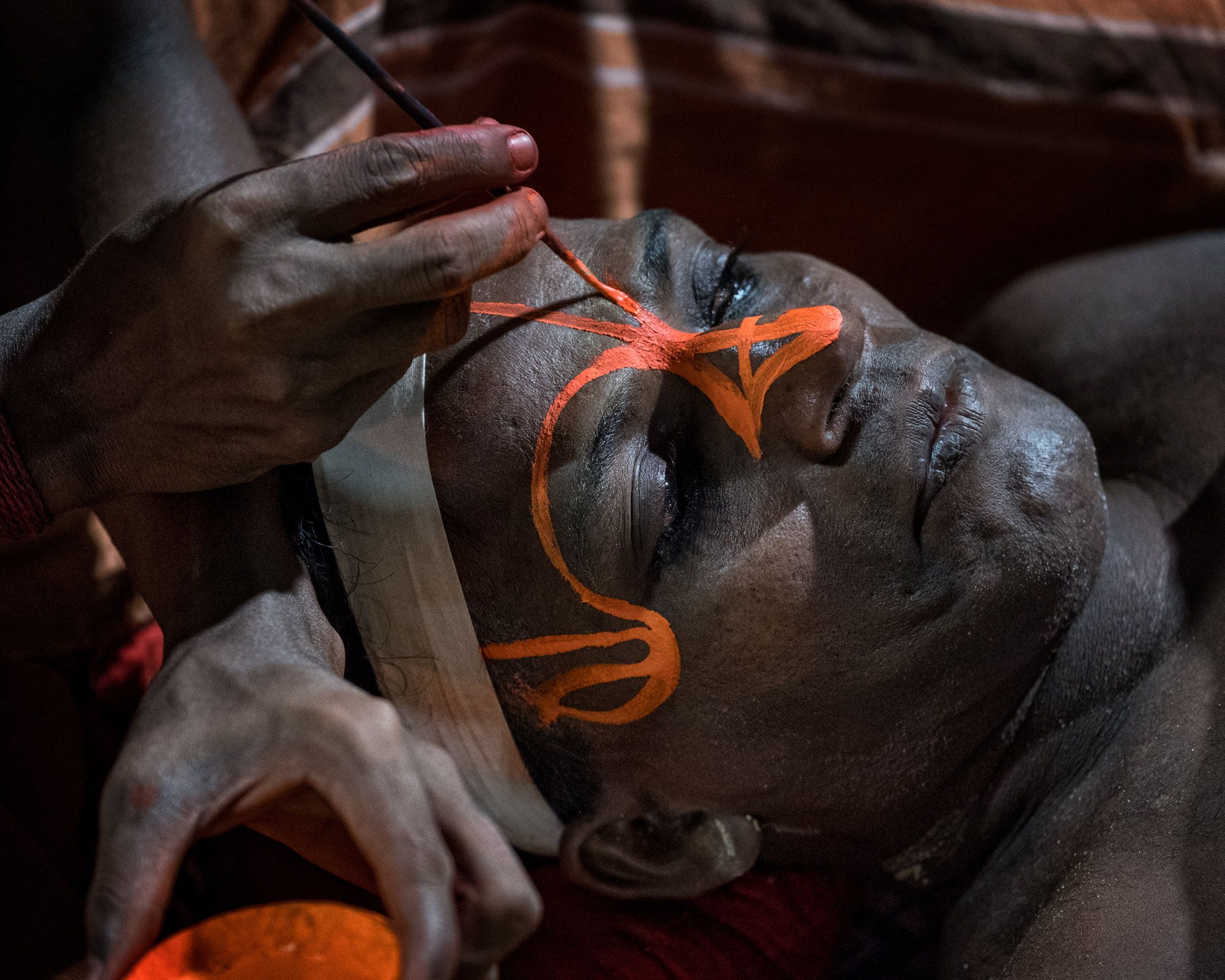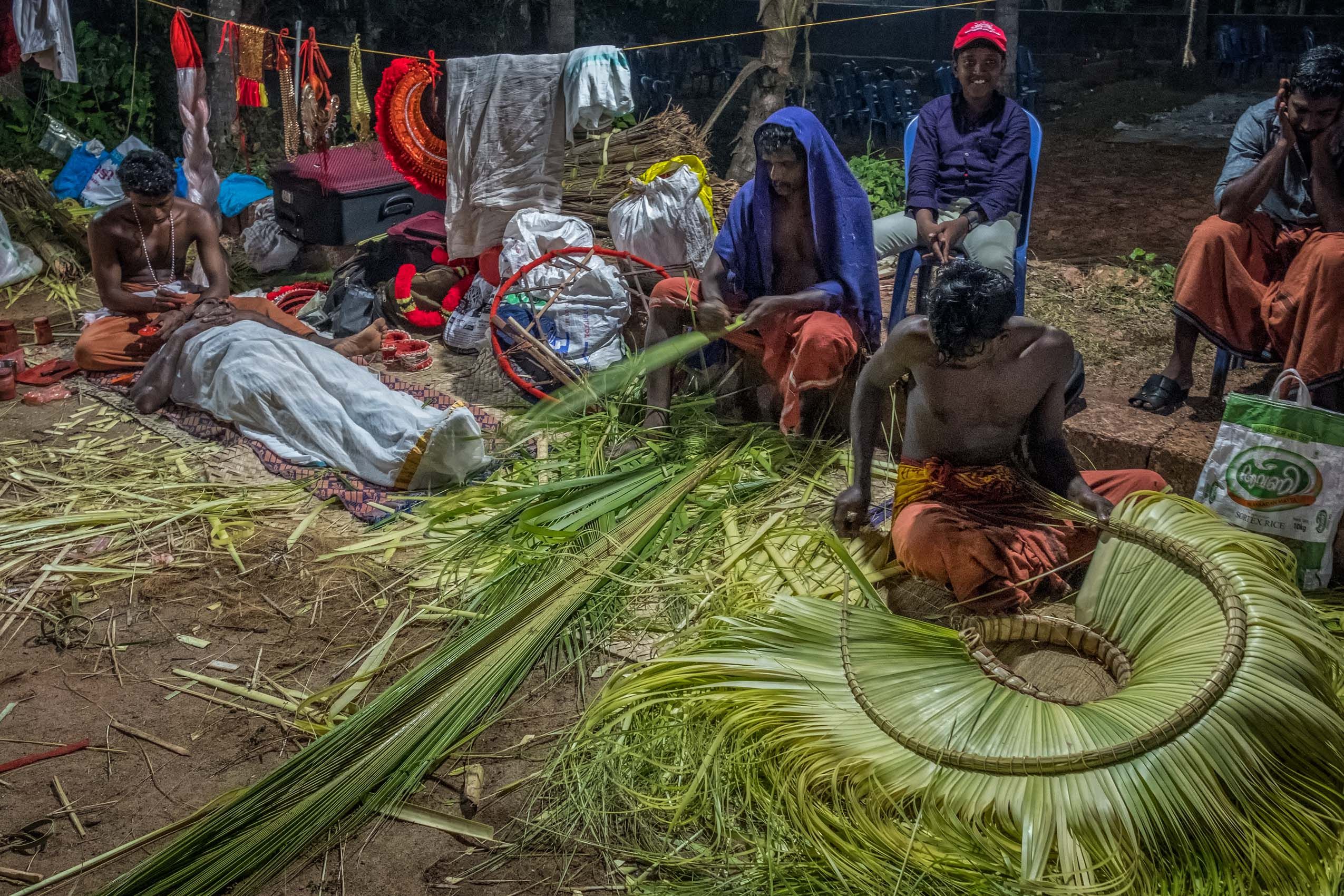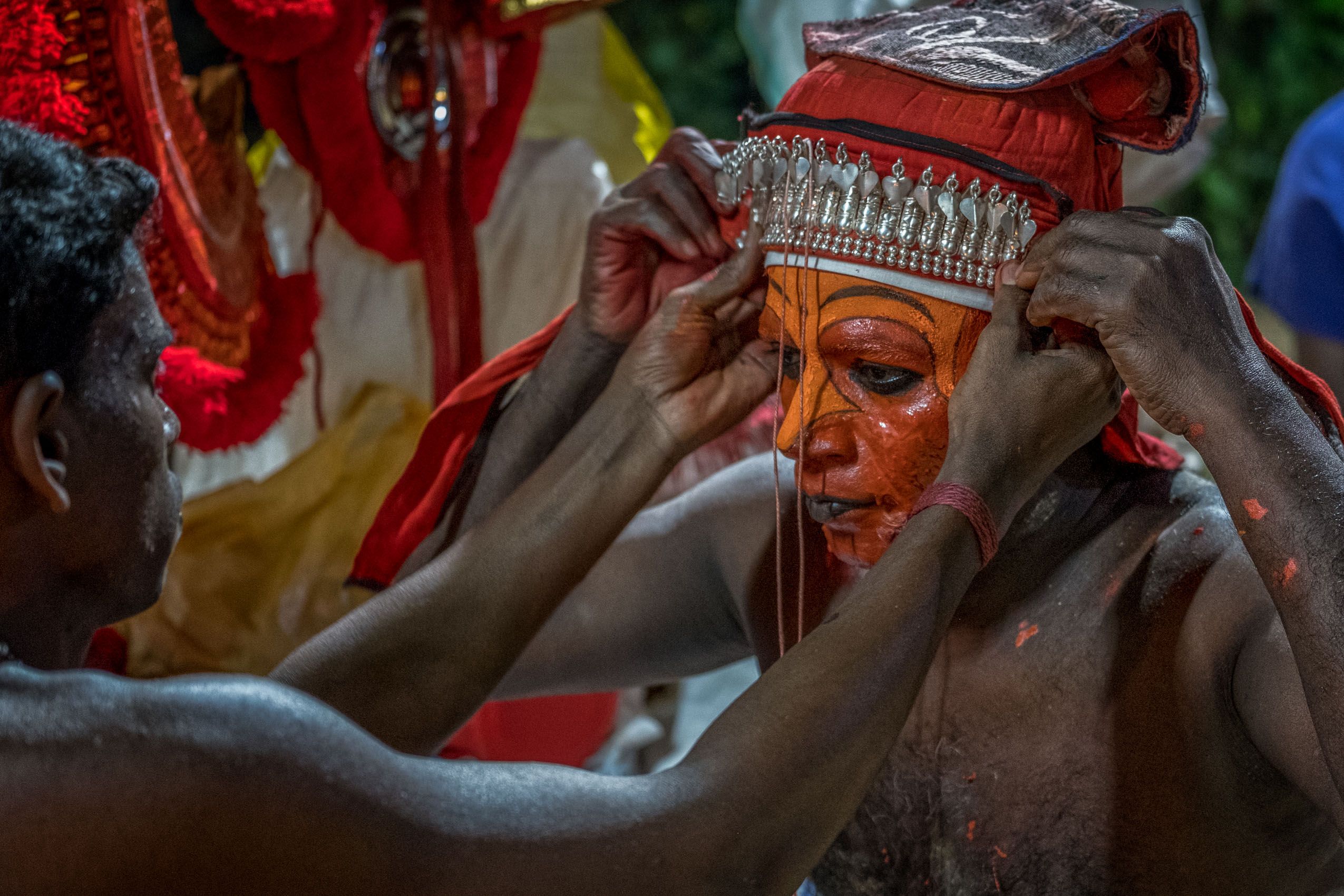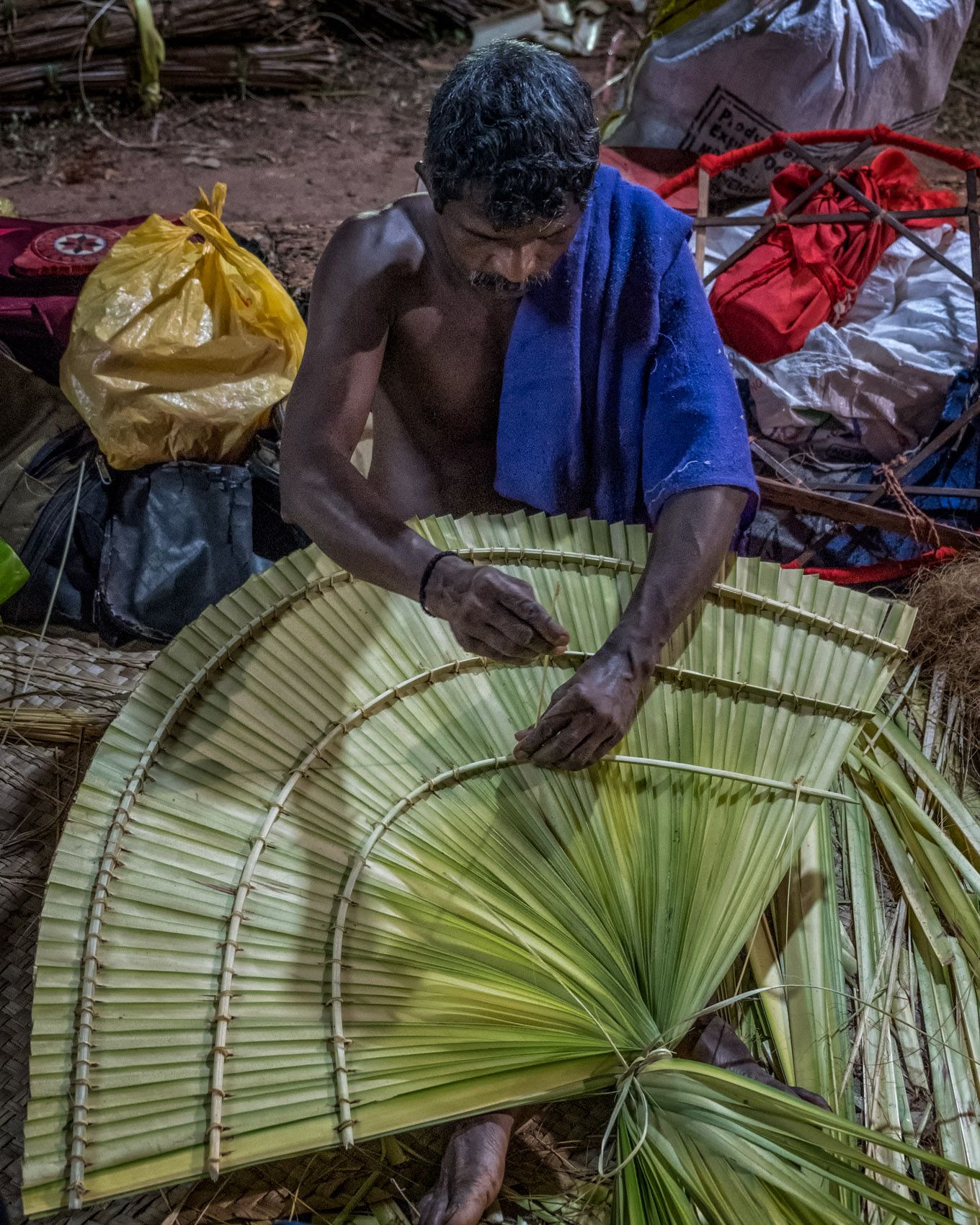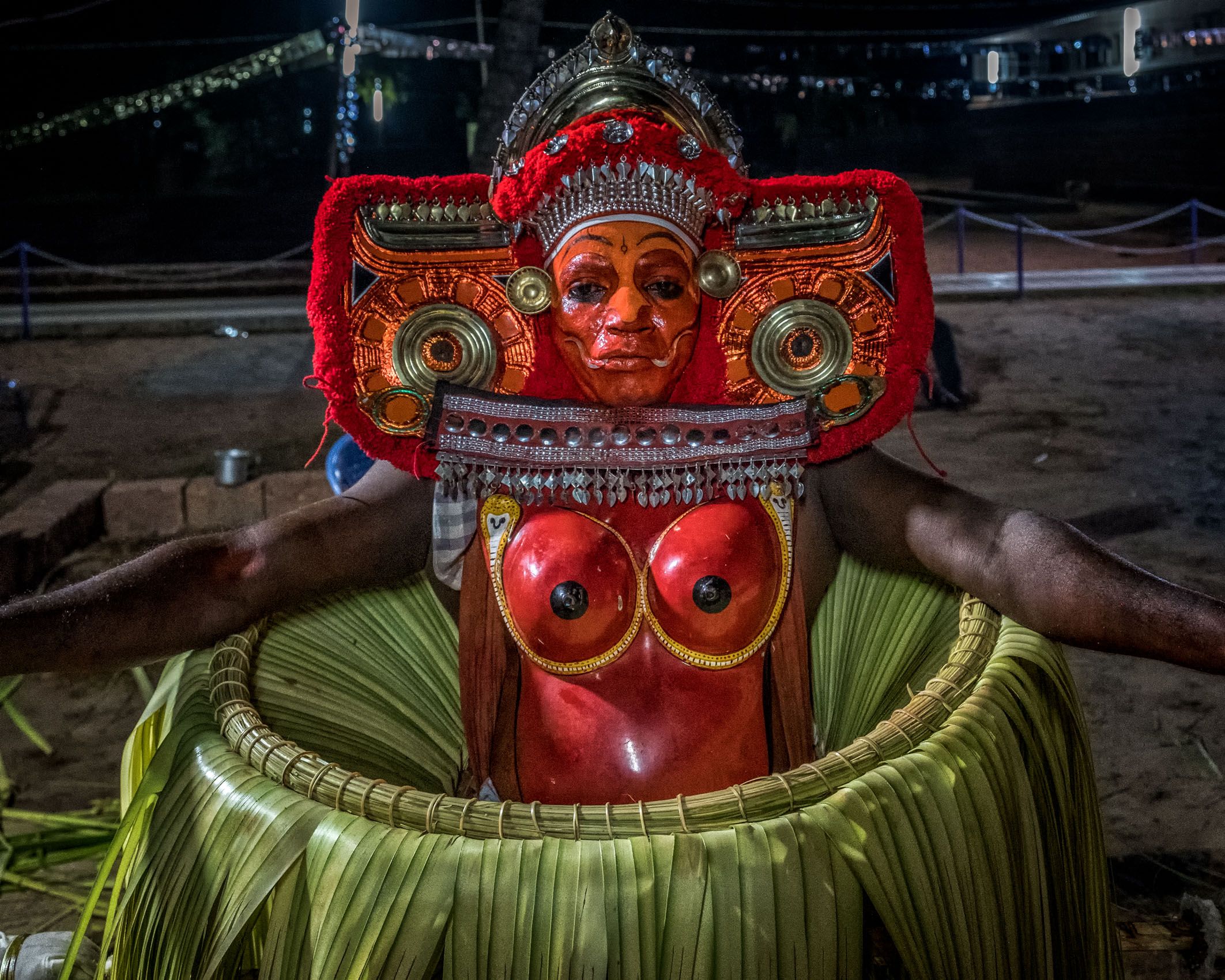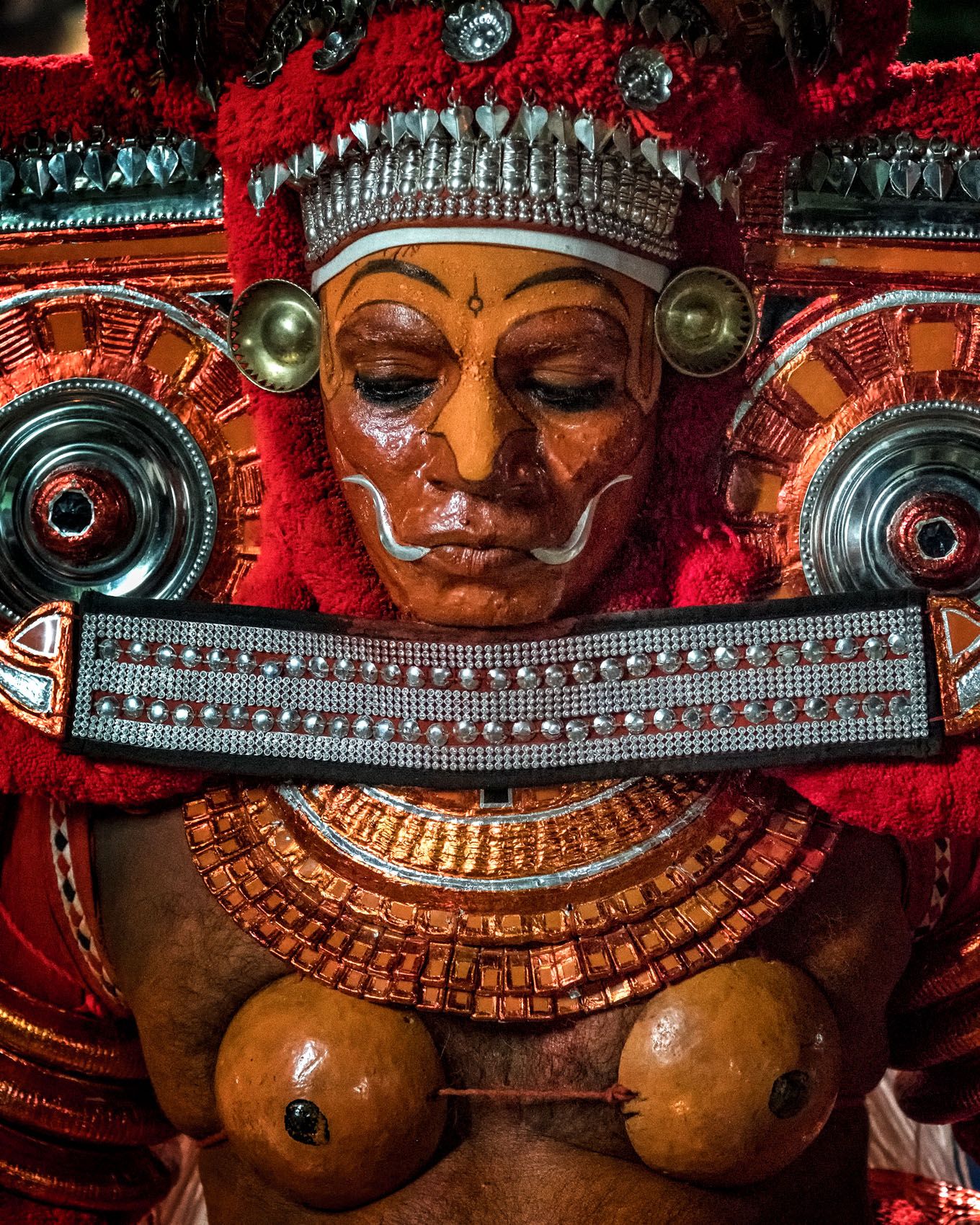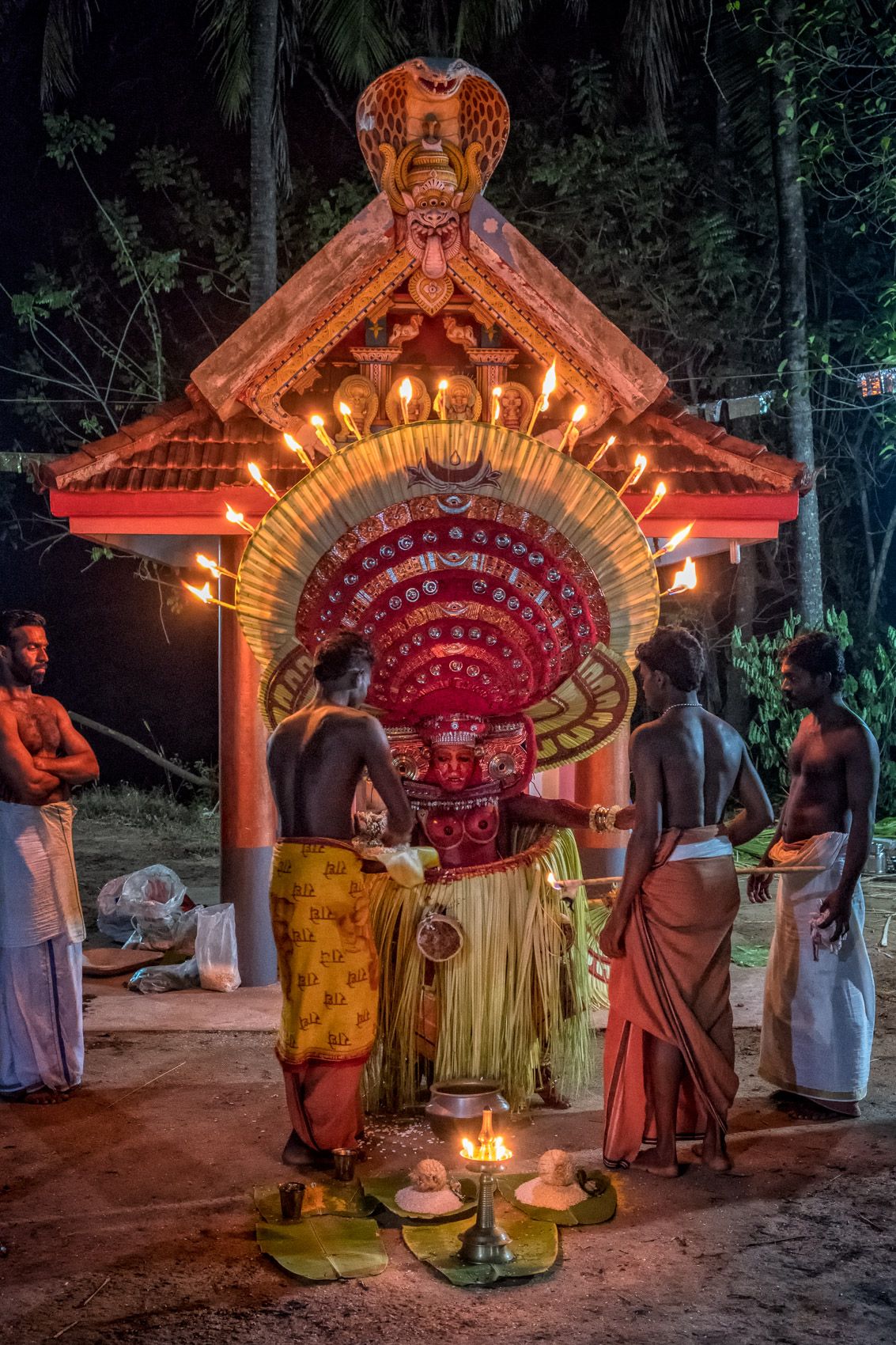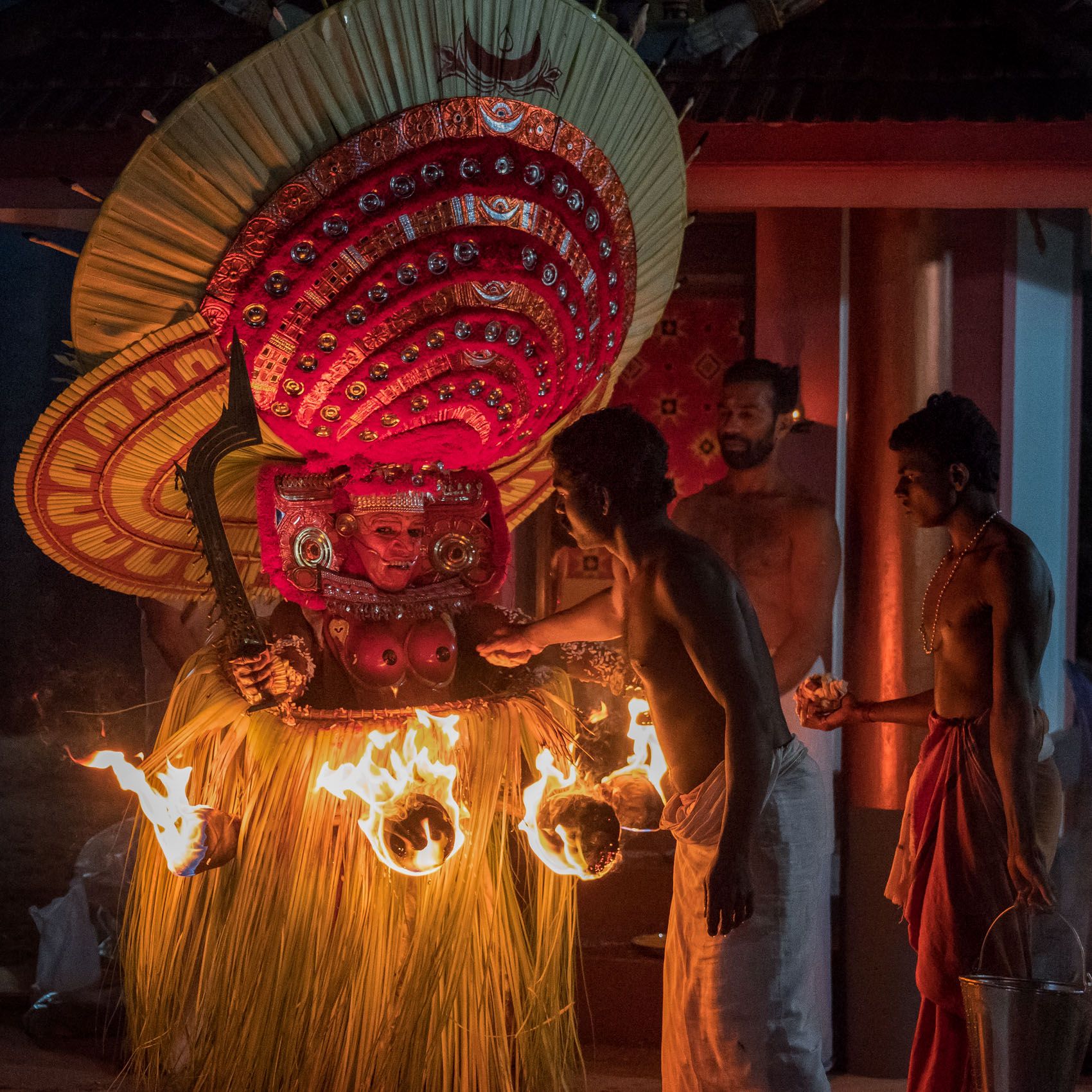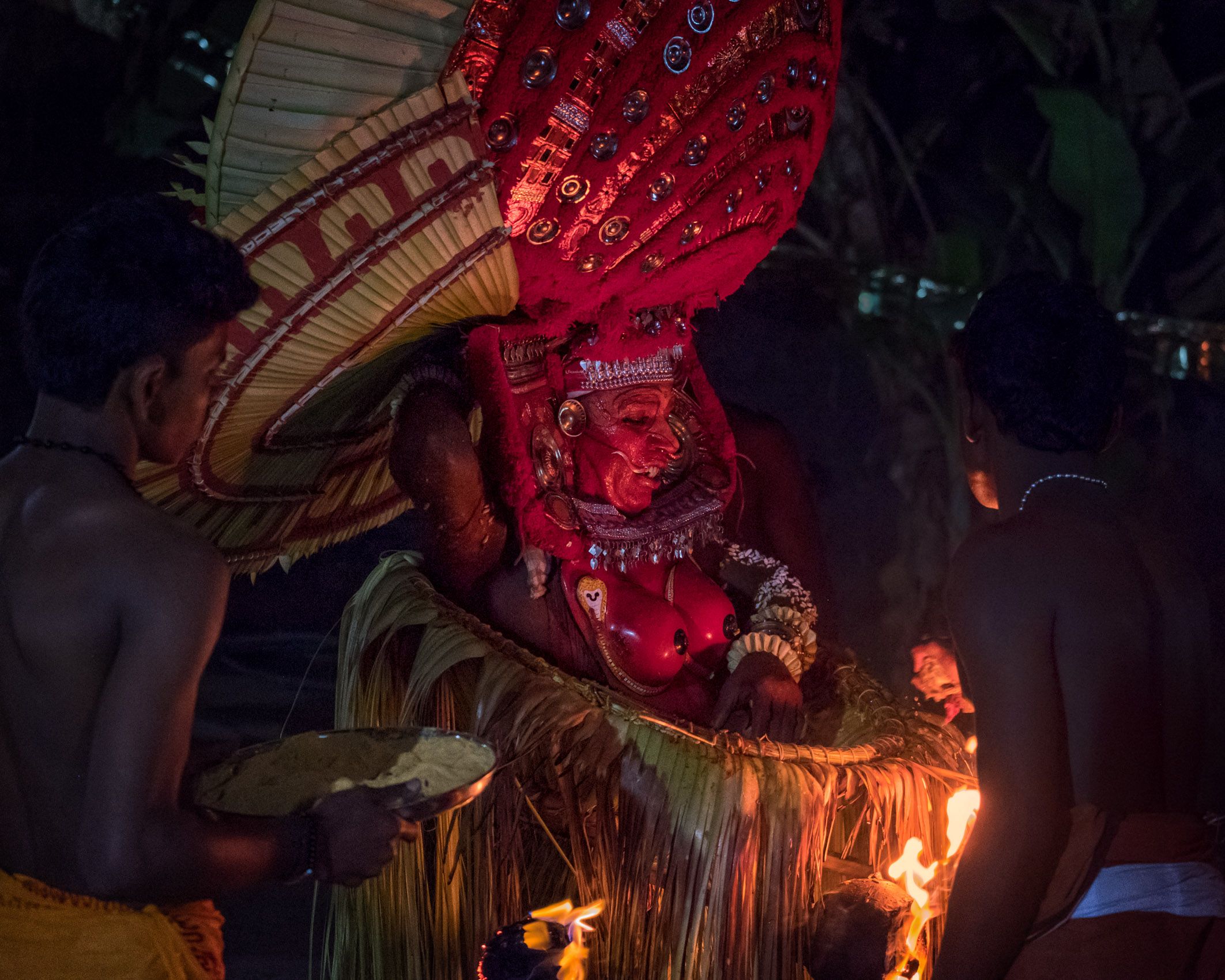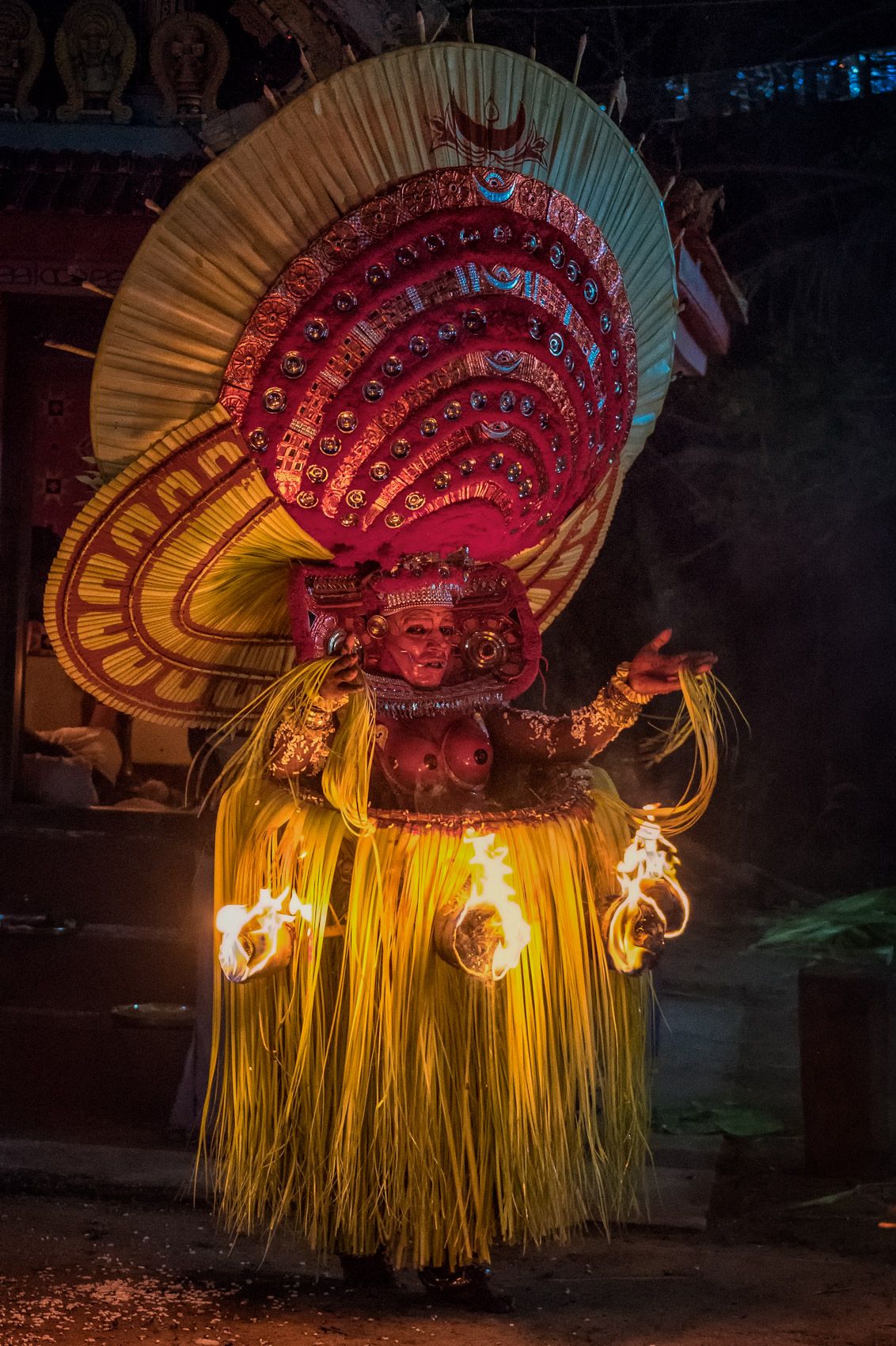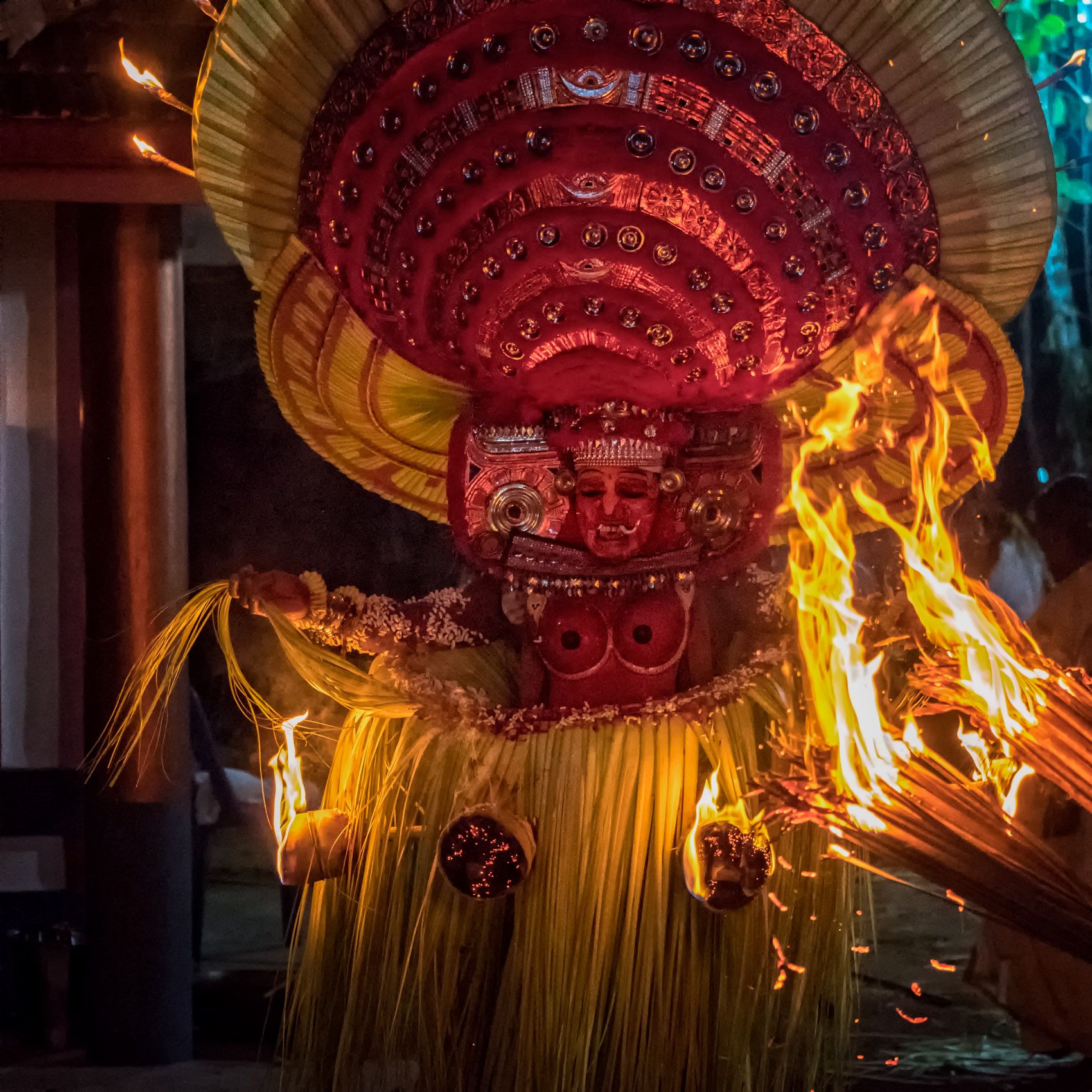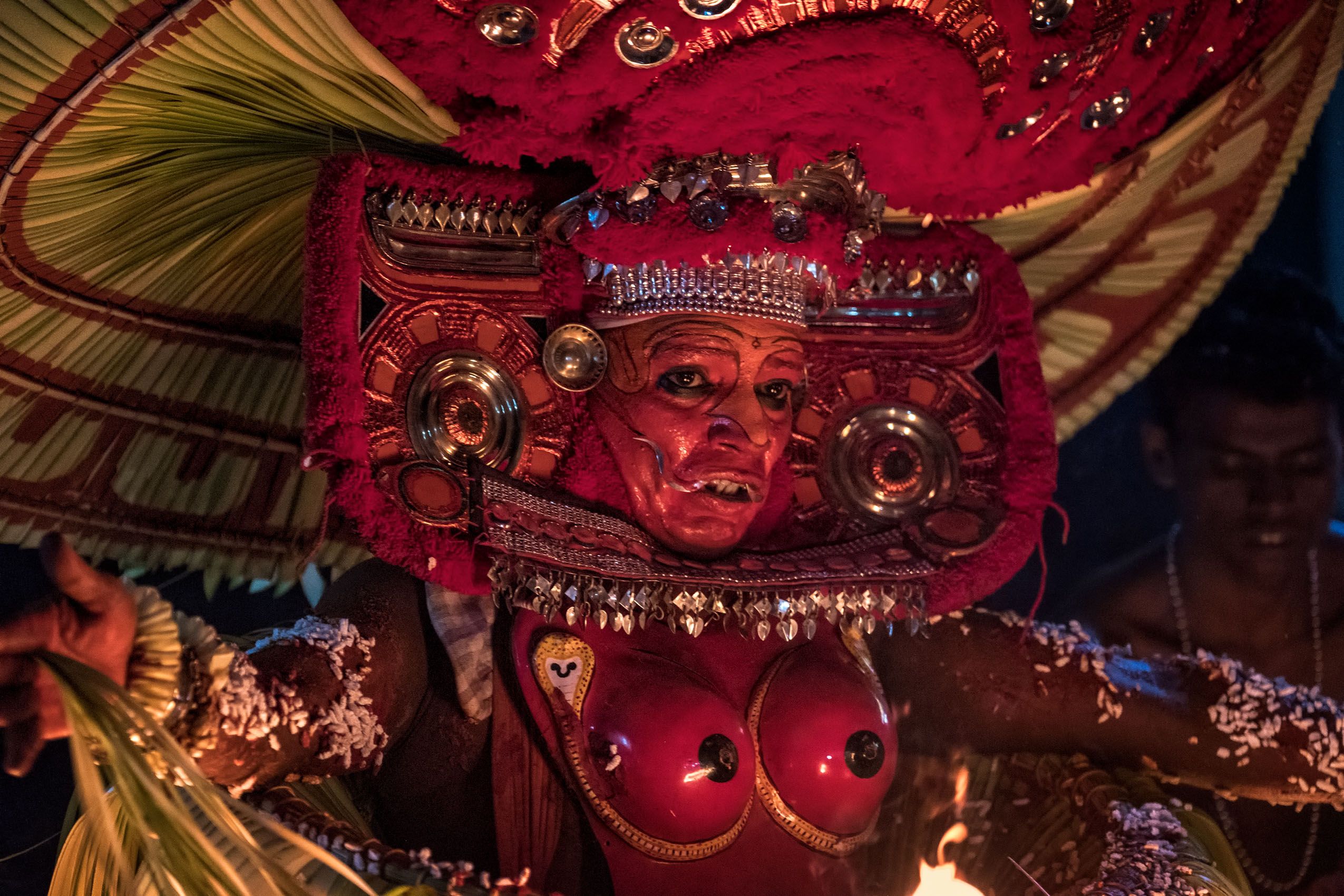THEYYAM: Incarnating the Gods
Theyyam (deriving from the term for a god common to both Sanskrit and Dravidian languages) is a ritual performance art peculiar to northern Kerala—the small coastal state in southwestern India that has been a destination of the international spice trade since ancient times. There are literally hundreds of theyyam scenarios, usually performed once annually during the season that runs between December and February, in countless small village and ancestral house temples. Theyyam seems to have archaic roots and many local variants interwoven with elements of the central Hindu tradition. Each shrine is devoted to a particular deity and sometimes also to a local folk hero, and the theyyam performance is not merely a celebration but an incarnation of the deity. The central performer is normally accompanied by a troupe of assistants including drummers and make up artists. The process of making up and dressing the performer, including freshly fashioning skirts and headdresses of bamboo for each performance, can take hours before the event formally begins with drumming, chanting and prayers. The moment when the performer enters a trance and is possessed by the god often occurs at the donning of the headdress or mask and the performer’s beholding of his divine image in a mirror. When possessed by the god, the performer is radically altered in voice, facial expressions, and movements. Wild dancing, threatening actions, and blood sacrifices are frequent elements, as well as altered speech in which the god may offer encouragement and support to individual supplicants, lecture the local dignitaries on their duties, resolve local disputes, and extend protection to the community. It is important to note that the performers and their helpers are members of the lowest castes or are dalits (“untouchables”), normally engaged in menial and polluting forms of work but for the duration of the theyyam season figures of power and prestige. As William Dalrymple has pointed out, theyyam is a “ritualised inversion of the usual structures of Keralan life: for it is not the pure and sanctified Brahmins into whom the gods choose to incarnate, but the shunned and insulted Dalits” (Nine Lives, 35).
The two daylight theyyams documented here were performed in villages in Kerala’s northernmost Kasargod district. In the first, the incarnated deity is Narashimha, the lion-man avatar of Vishnu. Called Vishnumoorthy, this is one of the most popular and widely performed of theyyams, and the story it tells is one in which the element of ritual reversal of normal hierarchy between Brahmins and Dalits is particularly strong. In the second theyyam—called Panjurli—the incarnated deity is Varahi, one of the mother goddesses of Hinduism; this sow-headed deity is the shakti or female energy of Varaha, the boar avatar of Vishnu. The blood sacrifice and devouring of the freshly killed raw chicken occuring here relates to the goddess drinking of the blood of the hostile powers she has vanquished. The nighttime theyyams in the portfolio were performed in a village in northern Kannur district, as part of a sequence that began in late evening and extended into the next morning. The spectacular fire theyyam of Puthiya Bagavathy concerns the divine power to cure disease that first took the form of a goddess from the holy fire. (With thanks to Sreejith Damodaran)



















